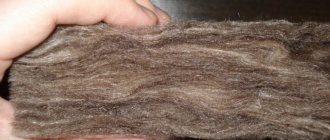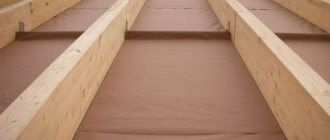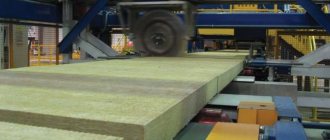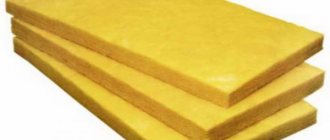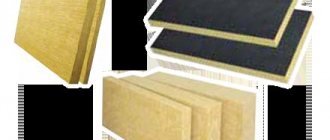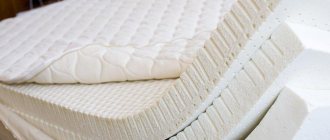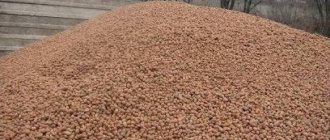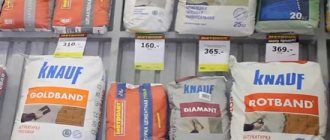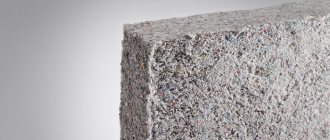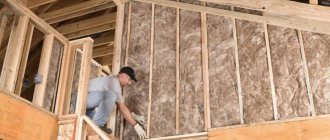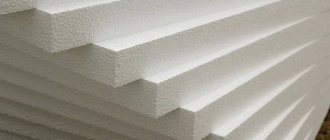Roll and slab insulation materials are used today in almost all areas of construction - from residential to industrial. Among the most popular and inexpensive solutions is mineral wool, the health hazards of which are sometimes the reason that people prefer to live in less comfortable temperature conditions. But is the widely used insulation really that dangerous and is it worth limiting yourself in comfort for fear of harming your own health?
Mineral wool - should you be afraid of it?
What does mineral wool consist of?
Many say that mineral wool causes serious harm to health. How true this statement is can only be said after studying the composition of the material. It consists of several components:
- base obtained by melting rock fibers;
- binder resins capable of forming the required shape of the material - roll or slab;
- impregnations that make mineral wool impervious to external influences.
Glass wool, which is based on a mixture of broken glass, limestone, and quartz glass, also belongs to the category of mineral wool. The mixture is melted and inflated with steam to obtain the finest air threads, which allows the insulation to recover after compression.
The material has a number of advantages that make it one of the industry leaders, namely:
- low thermal conductivity - from 0.035 to 0.042 W/mK;
- reduced moisture saturation coefficient (up to 1%);
- no shrinkage during long-term use;
- durability.
The stone base is environmentally friendly and does not have any harmful effects on the human body. Resins and impregnations, if the manufacturing and installation technology is not followed, can negatively affect health, but how serious will this impact be?
How does mineral wool affect the health of household members and insulation workers?
What is stone wool made from?
Stone wool is produced from rocks, usually the basalt group, by melting at temperatures above 1500 degrees and then spraying onto the fibers under the influence of a powerful air flow. During the production process, special water-repellent and binders are added. After this, the material is pressed into a dense carpet so that the mineral wool acquires the required density.
Synthetic substances are used as binding components. As a rule, these are phenol alcohols, phenol-formaldehyde, and urea resins. Bitumen and bentonite clays are also used. Currently, a composite synthetic binder consisting of phenol-formaldehyde resins and water-repellent additives is most often used. It provides the best thermal insulation performance.
The final stage of production is cutting basalt wool into slabs and mats of the required sizes; molded products (cylinders, segments) can also be produced.
Myth No. 1. Toxic substances in the environment
Excellent thermal insulation, excellent sound insulation properties, effective fire protection. Such attractive properties make mineral wool popular. But today it is customary to care not only about the comfort of household members, but also about the environment in general. Every conscious person thinks about the impact the material used when building a house or renovating an apartment will have on the environment.
The binders in mineral wool are phenolic resins, which can release toxic substances. Phenol when ingested:
- affects the brain, provoking short-term excitement and subsequent loss of strength;
- provokes headaches;
- causes coughing and other problems in the respiratory system, including respiratory arrest;
- promotes attacks of nausea and vomiting;
- leads to convulsions, fainting, damage to the cornea of the eyes, surges in blood pressure;
- causes the growth of malignant tumors;
- may cause the birth of children with mental or physical retardation.
But the mass fraction of phenol in the material is so small (1-2%) that in order to cause damage to health, you need to try hard. However, manufacturers take into account the opinions of their customers who fear that the material is harmful. Poisonous binders are not only contained in cotton wool in negligible quantities, but also remain in a polymerized state, which does not pose a danger to human health. Today they have begun to produce mineral wool, which instead of phenol contains completely safe and environmentally friendly bitumen.
The second thing that opponents of using mineral wool for insulation are afraid of is formaldehyde, the permissible concentration of which per 1 cubic meter should not exceed 0.05 mg. Low-quality materials can produce up to 0.02 mg of formaldehyde per square meter of insulated surface per hour. In addition, this poison is released by many finishing materials and furniture. This can lead to oversaturation of the air with poison, which can lead to irreversible damage to the human body, for example, causing infertility.
“Phenol-free” mineral wool from Knauf
Myth No. 3. Thermal calculations
Experts say that when working on wall insulation, special calculations are required. Without experience, as well as the participation of specialized companies, these calculations are impossible. It is not surprising that the services of such specialists are expensive. In fact, this is not at all necessary. Over more than 50 years of production, mineral wool manufacturing companies classify materials based on shape, brand, and thickness. You can get advice from sellers who will give accurate recommendations. Thus, the need to carry out thermal engineering calculations is nothing more than a myth.
Myth No. 2. Harm from contact with water
Perhaps the myth about the dangers of contact of mineral wool with water is the most justified. But this applies to a material that is produced using outdated technology - glass wool. A negative reaction of insulation to direct contact with water or wet steam leads to the accumulation of liquid, the subsequent formation of fungus and destructive mold.
And it is mold that harms humans, depressing the immune system, causing allergies, inflammatory processes in the respiratory system, skin diseases, cardiovascular pathologies, and damage to the central nervous system.
Advice! A competent approach to the choice of material will allow you to avoid the effects of mold on the body. That is, when purchasing insulation, you should give preference to a product with the lowest water absorption coefficient. In this case, even at high humidity, mineral wool will not absorb moisture and gradually transform it into mold.
High-quality wool is used to insulate facades that are not protected from moisture.
Harm of glass wool to the skin
During direct contact of glass wool with human skin, when laying it they work without gloves or special clothing, sharp fragments of microparticles penetrate inside and cause skin irritation, at the site of contact it becomes red and itching appears.
The particles can damage the skin and penetrate deep into the dermis, causing allergies. You should refrain from scratching the affected areas. Glass wool should be removed under clean running water.
This is important: all repair work with glass wool must be carried out while wearing protective clothing and rubber gloves or tarpaulin mittens.
Myth No. 3. Damage from fire of mineral wool
The most ridiculous myth about mineral wool is the high probability of the material igniting upon contact with fire. The absurdity of this assumption is obvious, because the basis of mineral wool is fibers obtained from stone. And, as you know, it is impossible to burn a stone. You cannot burn its derivatives either.
Of course, if you direct the flame of a gas burner at a layer of insulation, it will not withstand the force of the fire. But it won’t catch fire, it will simply char and turn black. There is no further spread of fire, the mineral wool does not smolder and does not release harmful substances into the air. The material is fire-resistant and can be used in facilities with a high fire hazard.
Mineral wool is a material that, in the event of a fire, will not allow the fire to spread to other rooms and buildings
Harm to the eyes
As is known, glass wool is characterized by increased fragility. Sharp and fine microparticle fragments penetrate the eyes and can cause serious eye damage. During repair work using glass wool without special glasses, particles can get into your eyes.
Symptoms of exposure:
- sharp pain in the eyes;
- lacrimation;
- feeling of discomfort;
- increased pain.
What to do if glass wool dust gets into your eyes? In this case, if you experience discomfort, you should consult a doctor.
Myth No. 4. Dust release in the house
The myth about dust, which can penetrate the lungs and cause a number of health problems, is associated with its predecessor - glass wool, widely used in Soviet times in the absence of alternative solutions for insulating buildings, communications and structures. Many still prefer this type of insulation today. The glass contained in such material is indeed capable of crumbling under mechanical stress. Glass dust settles in the lungs and on the skin, causing eye injuries, etc.
Modern insulation does not have such shortcomings. The material does not crumble during use, and the dust formed in its pores is no different from ordinary household dust. Considering that the insulation is covered with a layer of finishing, the amount of dust generated in a closed space is sharply limited and does not pose a health hazard. High-quality insulation will make the release of dust into the air almost impossible.
For more information about the dust emitted by mineral wool and its possible health hazards, watch the video:
Harm of glass wool to the lungs
The health hazard from glass wool is characterized by the fact that the composition contains mineral particles and phenol resins, which are added to hold these particles together.
If glass wool is used in an enclosed area, particles and toxic phenol are released into the air, which are inhaled by the lungs of people present there.
Harmful microparticles are not removed from the lungs for a long time, and can cause:
- allergic reaction in the form of a dry cough;
- shortness of breath;
- respiratory diseases that become chronic.
It's a fact: people who deal with glass wool are at risk for lung cancer.
Pulmonologist D. Vinogradov, associate professor of the 1st Moscow State Medical University named after. Sechenov notes that microparticles can cause various dermatoses, chronic and obstructive bronchitis, against this background there is the possibility of developing bacterial and fungal infections.
You need to know: indoor plants help bind mineral dust. Carpets and all sorts of soft toys are dust collectors. When cleaning a room with glass wool insulation elements, it is recommended to use a washing vacuum cleaner or install an air humidifier in the room
Is mineral wool harmful to health or not?
Mineral wool is one of the materials that has both ardent opponents and supporters who claim that this is the best way to quickly and efficiently insulate a house. Most often, a negative opinion is generated by rumors or the example of friends who have chosen low-quality material. Well-known manufacturers take into account that today, when choosing insulation, the buyer’s attention is paid not only to the thermal insulation qualities and cost of the product, but also to environmental friendliness, non-flammability, vapor and moisture permeability.
